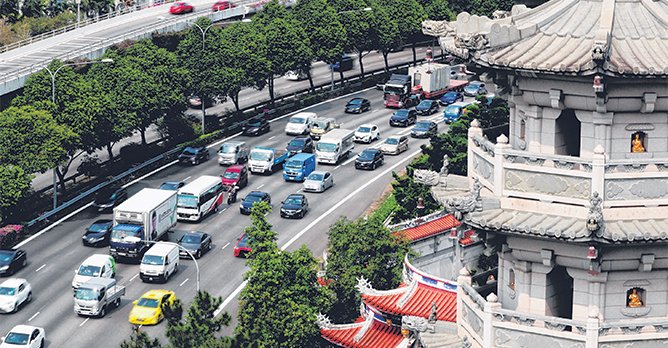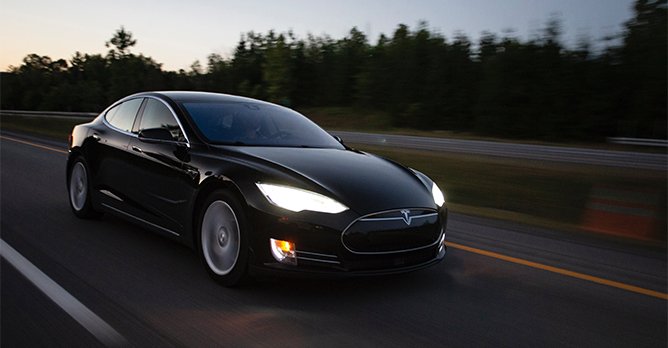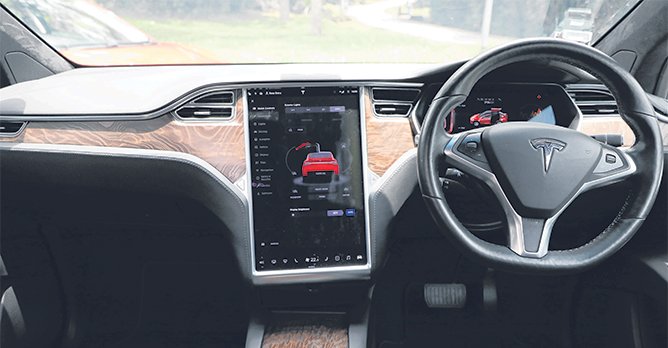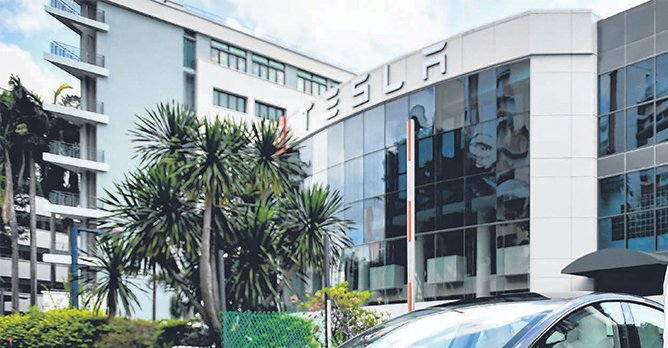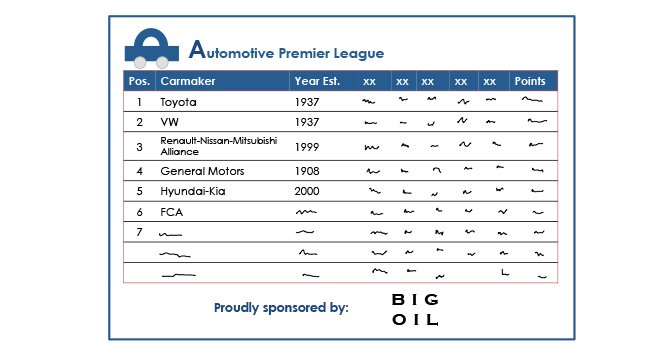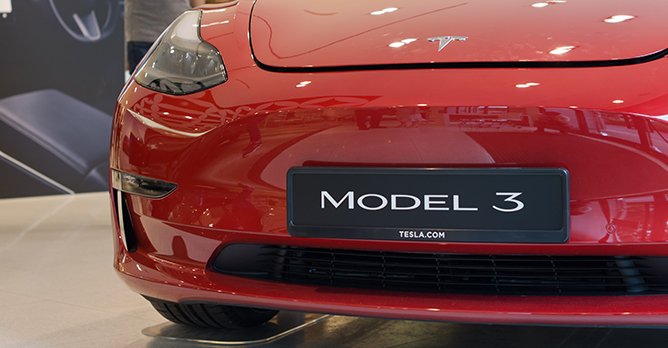Teslas may be a lifestyle - but so what?
02 Sep 2021|10,965 views
Back in 2019, then Environment and Water Resources Minister Masagos Zulkifli caused quite a stir when excerpts of his interview regarding Tesla's electric cars were published.
In a few sentences that have been discussed, regurgitated, and taken apart many times over on the Internet, he claimed that Tesla was attempting to sell a lifestyle with its cars - something Singapore wasn't interested in. Rather, the authorities had their eyes turned towards more important stuff: Robust climate solutions. Embedded within his criticism was an insinuation that electric vehicles were less of a priority to Singapore's sustainability efforts.
Of course, that didn't land very well.
It wasn't, and still isn't hard to poke holes in this argument because our abundance of petrol-driven cars also serve a lifestyle too - albeit one that has found a comfortable and firm spot in Singapore's energy landscape.
More importantly, looking back at the comments now, one cannot help but get the sense that the nation's recent warm embrace of Tesla feels like a bit of a backpedal.
We're going to go out on a limb among our car-loving readers, though, and venture this perspective:
It's not wrong to say that Teslas are a lifestyle.
Here's why.
Teslas and other EVs: Not made (or viewed) equally
It's true. Tesla can pride itself on being a producer of zero tailpipe-emission cars. But that doesn't mean that supporters of the Californian carmaker are entirely motivated by visions of a utopia in which nature is thriving.
Way beyond promises of a greener future, Tesla has grown to embody a forward-looking vision of building cars that has disrupted the traditions of legacy carmakers. To its many fans worldwide, Tesla takes the better parts of the car industry - decent build quality, unrivalled tech, and delicious driving thrills (nought to 100km/h in less than four seconds!) - while also throwing in fascinating goodies and good humour, concocting the perfect automotive mix.
For instance, with something as basic and common as Eco, Normal and Sport modes, Tesla bucked the trend, instead putting its own spin on the naming conventions (Ludicrous, Insane, Plaid). But it's not just fun and games; the Model S was also arguably the pioneer in tablet-like car infotainment screens.
In essence, while ensuring that its cars (mostly) deliver in terms of quality and comfort, Tesla's engineers have made the effort to future-proof them and to inject freshness into the everyday driving experience. Local radio DJ Germaine Tan once shared that her Model X even has a "fart sound" you can activate from the infotainment tablet to prank unsuspecting passengers.
"Who would think of something like that to put in a car?", she told the interviewer. And she's right.
Such design decisions are emblematic of how Tesla has resisted shedding its start-up skin even as it threatens to reach the heights of the heavyweights. It has intentionally taken a left-of-center approach, finding unplugged gaps and darting inside of them to bring to life what everyone else hasn't had the guts or ideas to do. And consumers have taken the bait.
One of Singapore's first Model 3 recipients, featured by The Straits Times last month, was asked if he had considered electric cars from other carmakers. The answer was a resolute no; Tesla's lead in technology, battery design and otherwise, couldn't possibly be matched by the traditional carmakers.
Punching upwards: The underdog
Fervent support for the carmaker - that extends past simply championing green causes - is also everywhere to be seen on the TeslaOwnersSG Twitter page.
While Singapore is no stranger to car clubs, there is a palpable, almost electric energy (ha ha) coursing through the various micro-interactions among its users.
They provide updates on Tesla developments in Singapore, retweet pictures of fellow owners smiling next to their new Model 3s, and even share what progress the carmaker is making in international markets, like China, where the Model 3 and Model S recently placed among the best-selling luxury EVs again. In this particular tweet, larger luxury marque, Audi, is made the laughing stock. Its latest e-tron has apparently sold a paltry 1,475 units compared to the Model 3's 85,000. "e-tron sales… looks like a flop (sic)", it reads.
Because Tesla is still the underdog against automotive giants like Toyota and Volkswagen Group, one gets the sense with these anecdotes that Tesla enthusiasts are cheering for their favourite team as if this were the automotive version of the EPL. Look out for Tesla the dark horse, rising through the ranks steadily to dislodge one of the Top 4!
And as a relatively young player on the market, this enthusiasm makes sense. Every new milestone of Tesla's is not to be taken for granted. With the momentum it has garnered recently, it's also hard to discredit its supporters - especially local ones, who've had to endure a decade-long wait for its return.
But then it is precisely this sort of high-stakes faith - part conviction of the company's pure-electric roots, part adoration of its genius, and part intrigue by its underdog status - that powers much of the fandom surrounding Tesla. It's the reason why many Tesla drivers say yes to a Model 3 and no to an e-tron. And it's also the very same reason why Teslas do serve a lifestyle indirectly: One belonging to the somewhat eco-friendly, but mostly adventurous and techy driver on the prowl for something different.
Nonetheless - EVs and quick math
But let's bring it all back together. Even if we were to conclude that Tesla fandom extends far beyond unadulterated care for the environment, so what?
Regardless of how one twists it, the most significant net effect of embracing Teslas will quite plainly be... a rise in the EV population. And pressure on our infrastructure to provide more charging stations.
That's it. It's just math.
As we discussed previously, Singapore cannot completely eradicate cars from its roads, even if it wanted to. At the same time, the science has shown too that EVs are still better than ICE cars for the environment in the long run, even after factoring in emissions from the production process. As such, where was ever the danger in embracing their growth? Since cars are still largely a lifestyle in Singapore, why not make it such that electric cars are the lifestyle instead?
Yes, Singapore must tweak its electricity grid to support the sheer volume of charging stations if we were to have, say, 1,000 Teslas on our roads tomorrow. Yes, an undeniably more urgent and crucial issue is to diversify our energy mix, such as through solar power. Yes, extending our transport network is also key to reducing emissions locally.
However, while Teslas are most definitely not the linchpin of our climate efforts, they are also not the enemy. They should have always been accorded some priority (alongside other EVs). Personally - and I'm no expert - I think maybe a less triggering response in 2019 would have read:
"Allowing Tesla into Singapore requires extensive infrastructural revisions (the energy grid being a focal point), towards which Singapore is admittedly slowly progressing, but which Singapore also currently does not see as a priority. We appreciate that Teslas are less damaging to the environment insofar as they are more sustainable when directly compared to combustion-engine vehicles, but Singapore's push towards climate neutrality is a multi-pronged effort that goes beyond just alleviating emissions from the transport sector. Furthermore, within the sphere of transport itself, Singapore's efforts are oriented more in the direction of promoting alternative transport modes, such as its rail network."
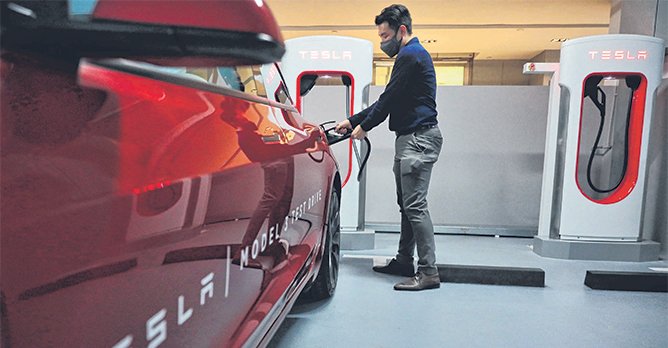
Still, let's not kid ourselves - half of us probably didn't even bother squinting through to the end of that entire chunk of text. The Minister's sound-bite was punchy and buzzy. It did its work and has reverberated through the passage of two years to still resurface in conversations today.
Adopting the most positive stance (I'm trying), that interview may have also added a not unwelcome spark to debates about Singapore's climate efforts. With the successive inching towards EVs now (including our welcoming of Tesla), it couldn't be clearer that Singapore has quietly come around anyway. It's just a shame that we took a while.
Teslas as a lifestyle? Maybe. But Teslas as a lifestyle - in 2021? Hop in and drive merrily along.
Back in 2019, then Environment and Water Resources Minister Masagos Zulkifli caused quite a stir when excerpts of his interview regarding Tesla's electric cars were published.
In a few sentences that have been discussed, regurgitated, and taken apart many times over on the Internet, he claimed that Tesla was attempting to sell a lifestyle with its cars - something Singapore wasn't interested in. Rather, the authorities had their eyes turned towards more important stuff: Robust climate solutions. Embedded within his criticism was an insinuation that electric vehicles were less of a priority to Singapore's sustainability efforts.
Of course, that didn't land very well.
It wasn't, and still isn't hard to poke holes in this argument because our abundance of petrol-driven cars also serve a lifestyle too - albeit one that has found a comfortable and firm spot in Singapore's energy landscape.
More importantly, looking back at the comments now, one cannot help but get the sense that the nation's recent warm embrace of Tesla feels like a bit of a backpedal.
We're going to go out on a limb among our car-loving readers, though, and venture this perspective:
It's not wrong to say that Teslas are a lifestyle.
Here's why.
Teslas and other EVs: Not made (or viewed) equally
It's true. Tesla can pride itself on being a producer of zero tailpipe-emission cars. But that doesn't mean that supporters of the Californian carmaker are entirely motivated by visions of a utopia in which nature is thriving.
Way beyond promises of a greener future, Tesla has grown to embody a forward-looking vision of building cars that has disrupted the traditions of legacy carmakers. To its many fans worldwide, Tesla takes the better parts of the car industry - decent build quality, unrivalled tech, and delicious driving thrills (nought to 100km/h in less than four seconds!) - while also throwing in fascinating goodies and good humour, concocting the perfect automotive mix.
For instance, with something as basic and common as Eco, Normal and Sport modes, Tesla bucked the trend, instead putting its own spin on the naming conventions (Ludicrous, Insane, Plaid). But it's not just fun and games; the Model S was also arguably the pioneer in tablet-like car infotainment screens.
In essence, while ensuring that its cars (mostly) deliver in terms of quality and comfort, Tesla's engineers have made the effort to future-proof them and to inject freshness into the everyday driving experience. Local radio DJ Germaine Tan once shared that her Model X even has a "fart sound" you can activate from the infotainment tablet to prank unsuspecting passengers.
"Who would think of something like that to put in a car?", she told the interviewer. And she's right.
Such design decisions are emblematic of how Tesla has resisted shedding its start-up skin even as it threatens to reach the heights of the heavyweights. It has intentionally taken a left-of-center approach, finding unplugged gaps and darting inside of them to bring to life what everyone else hasn't had the guts or ideas to do. And consumers have taken the bait.
One of Singapore's first Model 3 recipients, featured by The Straits Times last month, was asked if he had considered electric cars from other carmakers. The answer was a resolute no; Tesla's lead in technology, battery design and otherwise, couldn't possibly be matched by the traditional carmakers.
Punching upwards: The underdog
Fervent support for the carmaker - that extends past simply championing green causes - is also everywhere to be seen on the TeslaOwnersSG Twitter page.
While Singapore is no stranger to car clubs, there is a palpable, almost electric energy (ha ha) coursing through the various micro-interactions among its users.
They provide updates on Tesla developments in Singapore, retweet pictures of fellow owners smiling next to their new Model 3s, and even share what progress the carmaker is making in international markets, like China, where the Model 3 and Model S recently placed among the best-selling luxury EVs again. In this particular tweet, larger luxury marque, Audi, is made the laughing stock. Its latest e-tron has apparently sold a paltry 1,475 units compared to the Model 3's 85,000. "e-tron sales… looks like a flop (sic)", it reads.
Because Tesla is still the underdog against automotive giants like Toyota and Volkswagen Group, one gets the sense with these anecdotes that Tesla enthusiasts are cheering for their favourite team as if this were the automotive version of the EPL. Look out for Tesla the dark horse, rising through the ranks steadily to dislodge one of the Top 4!
And as a relatively young player on the market, this enthusiasm makes sense. Every new milestone of Tesla's is not to be taken for granted. With the momentum it has garnered recently, it's also hard to discredit its supporters - especially local ones, who've had to endure a decade-long wait for its return.
But then it is precisely this sort of high-stakes faith - part conviction of the company's pure-electric roots, part adoration of its genius, and part intrigue by its underdog status - that powers much of the fandom surrounding Tesla. It's the reason why many Tesla drivers say yes to a Model 3 and no to an e-tron. And it's also the very same reason why Teslas do serve a lifestyle indirectly: One belonging to the somewhat eco-friendly, but mostly adventurous and techy driver on the prowl for something different.
Nonetheless - EVs and quick math
But let's bring it all back together. Even if we were to conclude that Tesla fandom extends far beyond unadulterated care for the environment, so what?
Regardless of how one twists it, the most significant net effect of embracing Teslas will quite plainly be... a rise in the EV population. And pressure on our infrastructure to provide more charging stations.
That's it. It's just math.
As we discussed previously, Singapore cannot completely eradicate cars from its roads, even if it wanted to. At the same time, the science has shown too that EVs are still better than ICE cars for the environment in the long run, even after factoring in emissions from the production process. As such, where was ever the danger in embracing their growth? Since cars are still largely a lifestyle in Singapore, why not make it such that electric cars are the lifestyle instead?
Yes, Singapore must tweak its electricity grid to support the sheer volume of charging stations if we were to have, say, 1,000 Teslas on our roads tomorrow. Yes, an undeniably more urgent and crucial issue is to diversify our energy mix, such as through solar power. Yes, extending our transport network is also key to reducing emissions locally.
However, while Teslas are most definitely not the linchpin of our climate efforts, they are also not the enemy. They should have always been accorded some priority (alongside other EVs). Personally - and I'm no expert - I think maybe a less triggering response in 2019 would have read:
"Allowing Tesla into Singapore requires extensive infrastructural revisions (the energy grid being a focal point), towards which Singapore is admittedly slowly progressing, but which Singapore also currently does not see as a priority. We appreciate that Teslas are less damaging to the environment insofar as they are more sustainable when directly compared to combustion-engine vehicles, but Singapore's push towards climate neutrality is a multi-pronged effort that goes beyond just alleviating emissions from the transport sector. Furthermore, within the sphere of transport itself, Singapore's efforts are oriented more in the direction of promoting alternative transport modes, such as its rail network."

Did a full 180, baby: Tesla's plans for a network of superchargers were approved by Singapore in Jan
Still, let's not kid ourselves - half of us probably didn't even bother squinting through to the end of that entire chunk of text. The Minister's sound-bite was punchy and buzzy. It did its work and has reverberated through the passage of two years to still resurface in conversations today.
Adopting the most positive stance (I'm trying), that interview may have also added a not unwelcome spark to debates about Singapore's climate efforts. With the successive inching towards EVs now (including our welcoming of Tesla), it couldn't be clearer that Singapore has quietly come around anyway. It's just a shame that we took a while.
Teslas as a lifestyle? Maybe. But Teslas as a lifestyle - in 2021? Hop in and drive merrily along.
Thank You For Your Subscription.









